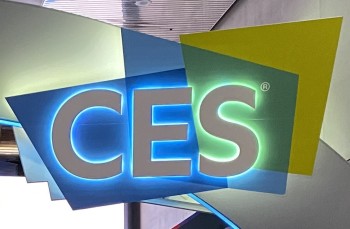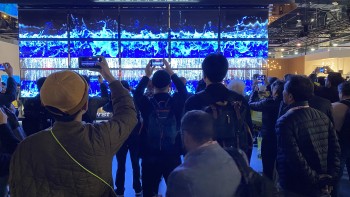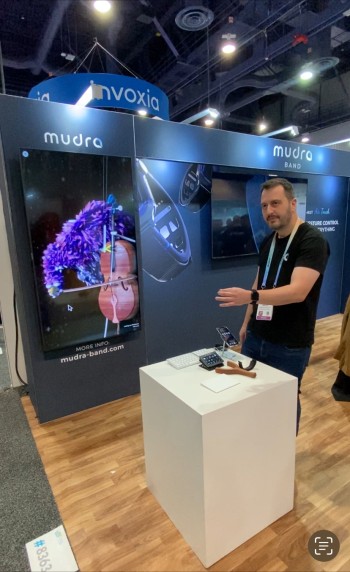Pause. That might be the word that comes to mind as I think about the impressions I took from CES this year. Pause. In a good way. In the way we sometimes take a break from frenetic activity to draw a breath, look around and reassess where we are. That moment downfield when the other team is calling its play and even on the balls of our feet, we seize the opportunity to see the whole field and plan for how the play might unfold.
Last week, I talked about the “iterative wow” and the “incremental better” – the notion of iterative and incremental innovations in tech. To be sure, there are mind-bending moments when something so new and novel emerges that we can identify clearly the before and after moments. On the plane out to CES, I watched (perhaps ironically) BlackBerry, which includes a pivotal scene recounting when Apple introduced the first iPhone in 2007. I do not recall that type of moment in Las Vegas this year, but I do recall being wowed by what I will call the benefits of the pause.
The way I see it, tech development moves in waves. There are peaks, times at which development is rocketing upward at breakneck speed and new products create theretofore untapped markets. And then there are other times where the development is in a stage of refinement, and during which developers fine tune the technology and ask, “OK, where else we can we apply these advances?”
# # #
We have sensors. We have cameras. We have processors. A “wow” moment of the past several years has manifested itself in ag tech “see and spray” systems, which combine on-field cameras with cloud computing to assess a plant and, after determining whether it is friend or foe, to apply herbicide or fertilizer as the tractor traverses the field. This year, a “wow” moment was FaceHeart, an app that is compatible with most smartphone and desktop cameras and which can measure heart rate, blood pressure, respiration rate, oxygen saturation, heart rate variability and indicators for atrial fibrillation – all through a 30-to-60 second selfie and with no physical patient contact. The app can perceive subtle cues in facial expression and coloring – the old, “You don’t look well,” but updated for the connected age. The app has received 510(k) clearance from the FDA and took home a CES Innovation Award.
This was not the only connected health device on display. Withings’ Beam-O (also a take-home winner of a CES Innovation Award) measures body temperature, can take an ECG, assess blood oxygen levels and serve as a digital stethoscope for heart and lung sounds. It can do all this in a unit that is about the size of a TV remote control.
And all of this gets back to the refrain of this year – “Technology that does not simply solve problems, but which transforms lives.” Vital signs are called “cardinal signs” because they can disclose crucial indicators of patient well-being and help physicians determine whether medical intervention is necessary. Remote monitoring can be especially useful for mobility-compromised patients or in rural spaces where health care resources might not be readily available (for information about the value of telehealth for rural spaces, see this Smart Rural Community infographic).
And then there are more pedestrian products – leak detection and environmental monitoring. Again, products of a type that have been on the market for years, but now demonstrating a type of refinement and ease of use that might not have been present in initial releases. SenoSpace specializes in wireless sensors that can operate independently or be grouped around a hub for industrial or residential environments. They measure moisture, temperature, humidity and other environmental indicators. That corner of the basement that always floods when you’re away from home? Vacation in peace, my friend - this IoT sensor will alert your neighbor or plumber if trouble occurs.
And yet in all of this, there are difficult questions of privacy and the role of AI. Maybe not in the little box that tells me when the boiler springs a leak, but in the mountains of healthcare data. And that is another impression I took away this year: the imperative to address AI and, particularly, generative AI.
# # #
Are you an optimist or pessimist on AI? Do you think that slowing AI will be helpful or harmful? Let’s start with a threshold principle: We cannot stop AI. Even if we are willing to stifle innovation, others will be developing and racing ahead of us.
So, let’s talk about the benefits. I have yet to be convinced that the massage chairs at CES were truly incorporating AI. Yes, the internal rollers are calibrated to respond to body shape and weight, but really, elevators have relied on scales for decades to maintain a constant speed no matter the passenger load.
So, let’s talk about generative AI, the ability of those electronic neural networks to anticipate the next word, or pixel, or concept, and how that can be deployed to accomplish things we could not do with so-called “traditional” AI. How AI can power neuroimaging in stroke care, or analyze patient movement patterns to guide therapeutic interventions to improve motor and gait functions, an especially helpful function in rural areas that are facing critical workforce shortages of physical therapists. Or help triage radiologist reports. Or enable chatbots to provide more personalized responses. So, at once we understand why companies are hiring CPOs (Chief Prompt Officers). And why cybersecurity will be increasingly important to ensure that data never leaves the mothership.
# # #
And even in the so-called quiet moments of tech development (that pause, so to speak), there is a steep curve. Technology moves fast. Firms that incorporate it are slightly slower. The market responds even more slowly – it needs time to absorb the change and to cycle through the stages of early adoption and then widespread acceptance. And then the regulator, who must ensure that its responses are not outdated by the time the rules are published.
And perhaps that is another takeaway from CES this year. There will be cycles of intense change and development connected by periods of a perceived pause. But the markets and regulators can never rest (the imperative to identify where and when to apply a regulatory imprint is a constant). Because even in that pause, we’re always moving forward.




